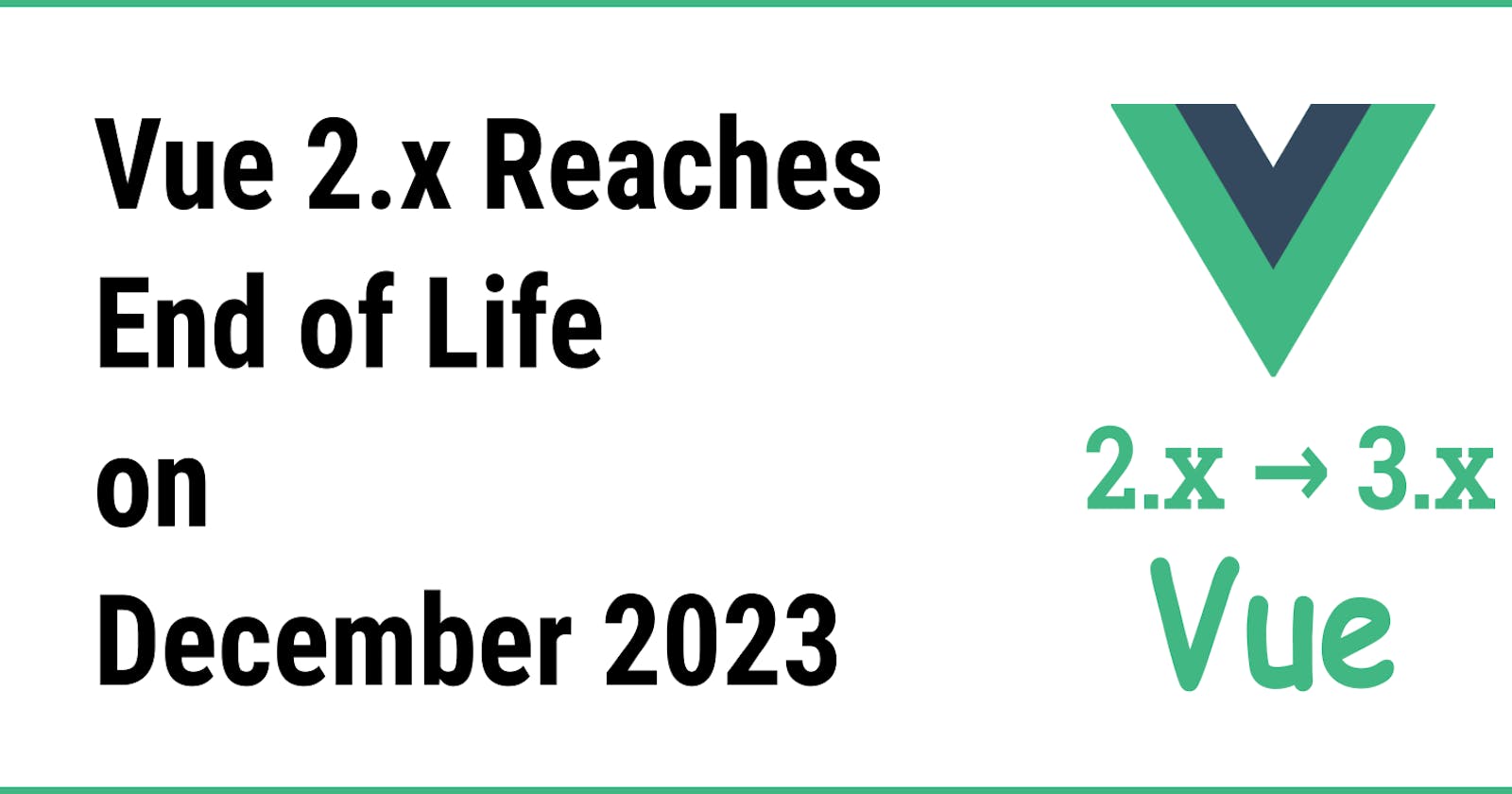Vue 2 reached its end of life on December 31, 2023, It's been more than 3 years since Vue 3 was available, but still, there are a lot of Vue Js applications that are running in Vue 2. In this article, I will demonstrate two different approaches to upgrading the Vue Js application.
Approach 1: Follow the Vue Js upgrade guide
Vue Js Team has provided the upgrade guide to migrate from Vue 2 to Vue 3. The documentation has also listed all the breaking changes, which you may need to consider while upgrading your application. Besides that, you also need to consider all the dependencies and its upgrade guide. But even after you consider all the factors, there will be a lot of work to do. But there is a solution Migration Build.
Migration Build
Migration build or @vue/compat is a package that provides compatibility of your current Vue 2 application to run with Vue 3. This package provides the same APIs as Vue 2 and runs in Vue 2 mode by default so that the same application runs in Vue 3 but in compatibility Vue 2 mode. This feature helps to write new code in Vue 3 and change a component one by one in the long run. Another feature of this package is that you can turn on or turn off a single feature, which means you start with full compatibility mode and migrate one by one turning the migrated features off and finally removing the compatibility mode. The basic example with Vite would look like:
// vite.config.js
export default {
resolve: {
alias: {
vue: '@vue/compat'
}
},
plugins: [
vue({
template: {
compilerOptions: {
compatConfig: {
MODE: 3,
}
}
}
})
]
}
Example: v-model compat mode
In 2.x, v-model passes the value as a prop and emits an input event. This concept can be presented as:
<BaseInput v-model="model"/>
<!-- is equivalent to -->
<BaseInput :value="model" @input="model=$event"/>
But in 3.x version, the value props of v-model is changed to modelValue, and input is changed to update:modelValue. This concept can be presented as:
<BaseInput v-model="model"/>
<!-- is equivalent to -->
<BaseInput :modelValue="model" @update:modelValue="model=$event"/>
So to work with the Vue 2 Version of code in Vue 3 as well, we can simply enable the COMPONENT_V_MODEL migration build flag.
compilerOptions: {
compatConfig: {
MODE: 3,
COMPONENT_V_MODEL: true,
}
}
Compat mode Limitation
Not all the features and APIs of Vue 2 are supported by @vue/compat, some features are not supported even by Migration build mode, they have also listed the Limitations in detail. One of my experiences was with the vee-validate library. We were solely depending on the vee-validate version 2.x library to validate input on the frontend side, this library was using some internal APIs (VDOM and VNode API) to make things work, However, those internal APIs are removed in Vue 3 and not even supported by compact mode as well, which means this library never gonna upgrade to 3.x version, resulted that we never can do upgrade our Vue 2 application to Vue 3.

Approach 2: Start a new Vue project
In this approach, instead of migrating the old code base into Vue 3, a new Vue project will be created in a new directory, let say assets. It would be a completely new Vue project, inside assets directory, that would have it's own package.json files, it's own index.html, it's own node_modules, everything new. The benefit of this approach is that you don't need to consider any breaking change, it doesn't interfere with the existing system, however, you can use the components from the root projects. The folder structure would look like this, Please go through a source code for this demo App:
root
│ package.json
│ node_modules
│ vite.config.js
└───src <!-- Vue 2 Application -->
│ │ App.vue
│ │ main.js
│ │ index.html
└───src-vue-3 <!-- Vue 3 Application -->
│ │ package.json
│ │ node_modules
│ │ index.html
│ │ main.js
│ │ vite.config.js
Routing
Routing is a little bit tricky here, your Vue 2 application is serving the root route http::127.0.0.1:8080, and Vue 3 application will be served on some path let's say http::127.0.0.1:8080/vue-3, which means vue-3 the path will be the root for this Vue 3 application. The one limitation of this is that you can't define multiple immediate routes from the root domain, i.e, you can't define http::127.0.0.1:8080/vue-3 and http::127.0.0.1:8080/vue-3-another for the Vue 3 application unless you explicitly define a nginx rule for it.
Conclusion
In this article, I have discussed two different approaches to migrate your Vue application from version 2 to Version 3, For many of us, the 1st approach doesn't work for various reasons, that's where the second approach gives us a way to write all new code in Vue 3, whereas leaving the existing code in Vue 2. Another solution would be to get help from paid Never Ending Support, which they are offering never-ending support for Vue 2 (Non Promotional Link). If none of these solutions works for you, you can stay at Vue 2 as long as you want, End of life doesn't mean It will stop working from tomorrow, It just means there will be no active development, and no more new features, and no security fix, otherwise, it would work forever, like it's working now.
